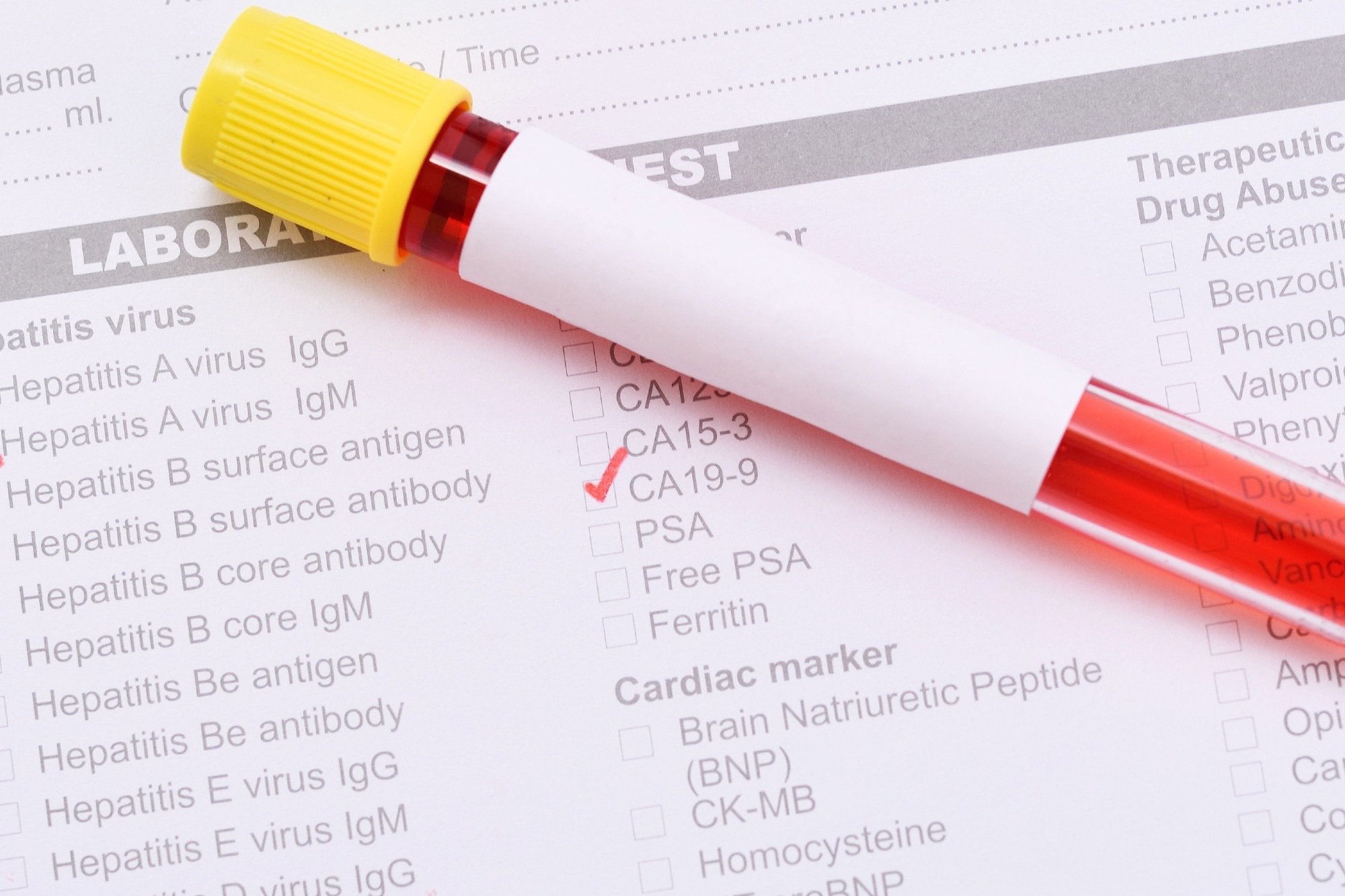Home » Health News »
Study assesses the value of predictive biomarkers for early-stage COVID-19 infection
In a recent study published in the journal Healthcare, researchers illustrated that certain biomarkers may be better predictors of coronavirus disease 2019 (COVID-19) than others.

Biomarkers such as platelet (PLT) and eosinophil (EOS) count appeared to predict COVID-19 severity better than neutrophil-lymphocyte (NLR) and platelet-lymphocyte ratios (PLR).
Background
COVID-19 infections have a highly variable clinical spectrum ranging from mild to severe illness. This has prompted researchers to seek biomarkers that serve as early warning signals for potentially severe cases.
Common biomarkers include C-reactive protein (CRP) and complete blood cell count (CBC) parameters, which are laboratory diagnosis standards and may be more useful in predicting disease progression.
Mild cases have lesser levels of CRP, neutrophil (NEU) count, aspartate aminotransferase, creatinine, lactate dehydrogenase (LDH), D-dimer level, and proinflammatory cytokines. Critical COVID-19 cases are characterized by increased levels of CRP, ferritin, interleukins, lymphocyte (LY), eosinophil (EOS), and platelet (PLT) counts, while LY and monocyte counts decrease.
The NLR is the most commonly used prognostic biomarker in infectious diseases, but its values are dependent on age, gender, comorbidities, and specific drugs. Corticosteroid treatment may result in an increase in white blood cell (WBC) count accompanied by high NEU and low LY, EOS, and basophil (BAS).
This raised concerns about whether COVID-19-positive patients were receiving corticosteroid therapy and the dosing regimen used in many studies. The present study examines whether baseline biomarkers and CRP levels can predict the development of pneumonia and the need for hospitalization with oxygen therapy prior to treatment interference.
About the study
The current investigation included 200 COVID-19 ambulance patients from the Novi Sad Health Centre who denied medication use prior to blood sample analysis. Participants ranged in age from 20 to 81 and exhibited respiratory infection symptoms.
They were included if they tested positive for severe acute respiratory syndrome coronavirus 2 (SARS-CoV-2) or visited the COVID-19 ambulance within seven days of experiencing symptoms. Participants in the study also underwent a physical examination, Saturation of Peripheral Oxygen (SpO2) testing, laboratory analysis (CBC and CRP on the same day), and a chest X-ray.
All hospitalized patients had a SpO2 below 94% in room air, a respiratory rate greater than 30 breaths per minute, and radiographic evidence of pneumonia, rendering them gravely ill. Using Statistical Package for the Social Sciences (SPSS 23.0), chi-square, and Mann-Whitney U tests, the data were analyzed for group comparison.
A p-value of <0.05 was determined to be statistically significant. Using binary logistic regression, pneumonia, and hospitalization were independently predicted, and the factor with the best univariate results was selected for multivariate analysis. Area Under the Curve (AUC) and receiver operating characteristic (ROC) curves were calculated for variables with statistical significance.
Results
The participants were divided into two cohorts based on the presence or absence of pneumonia, spanning a wide age range from 20 to 81 years. The research was primarily influenced by the prevalence of pneumonia and the necessity of oxygen therapy in healthcare facilities.
The study observed that those diagnosed with pneumonia displayed decreased levels of EOS and PLT, along with increased age groups, CRP, and NEU counts, in comparison to individuals without pneumonia. No apparent correlation between gender and pneumonia was observed.
A multivariate logistic regression analysis found that pneumonia was strongly predicted by age, CRP, and EOS count. There were no significant differences observed in the counts of other blood cells or computed ratios between pneumonia patients who were hospitalized and those who were not. However, there were notable variations in the levels of plasma CRP, PLT, and EOS. The results of the chi-square test did not indicate a statistically significant association between gender and hospitalization.
Despite the fact that PLT counts in hospitalized patients remained within the normal range, the use of linear regression analysis revealed that this particular feature independently predicts the likelihood of hospitalization. The cut-off value of 180 x 109/L was determined based on an evaluation of the ROC curve, with a sensitivity of 60% and a specificity of 58%.
Conclusion
To conclude, the study findings showed that biomarkers like PLT and EOS count predict COVID-19 severity better than common biomarkers such as NLR and PLR.
Although biomarkers like CRP and CBC parameters can predict severe COVID-19 and hospitalization requirements, the authors believe that the utilization of a single parameter to predict disease severity may be more effective because the assessment of patients demands that a physician make quick decisions.
Additionally, creating a formula to estimate the likelihood that a patient may develop severe COVID-19 could be helpful, but it would need to consider several factors, such as patient age, comorbidities, sex, and ethnicity.
- Mihajlović A, Ivanov D, Tapavički B, et al. (2023). Prognostic Value of Routine Biomarkers in the Early Stage of COVID-19. Healthcare. 11(15):2137. doi: 10.3390/healthcare11152137. https://www.mdpi.com/2227-9032/11/15/2137
Posted in: Medical Science News | Medical Research News | Disease/Infection News
Tags: Biomarker, Blood, Cell, Coronavirus, Corticosteroid, covid-19, C-Reactive Protein, Creatinine, Cytokines, D-dimer, Drugs, Eosinophil, Healthcare, Infectious Diseases, Laboratory, Lymphocyte, Monocyte, Oxygen, Oxygen Therapy, Platelet, Pneumonia, Protein, Research, Respiratory, SARS, SARS-CoV-2, Severe Acute Respiratory, Severe Acute Respiratory Syndrome, Syndrome, X-Ray

Written by
Susha Cheriyedath
Susha has a Bachelor of Science (B.Sc.) degree in Chemistry and Master of Science (M.Sc) degree in Biochemistry from the University of Calicut, India. She always had a keen interest in medical and health science. As part of her masters degree, she specialized in Biochemistry, with an emphasis on Microbiology, Physiology, Biotechnology, and Nutrition. In her spare time, she loves to cook up a storm in the kitchen with her super-messy baking experiments.


